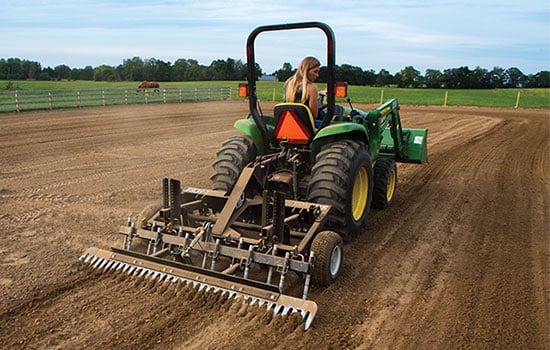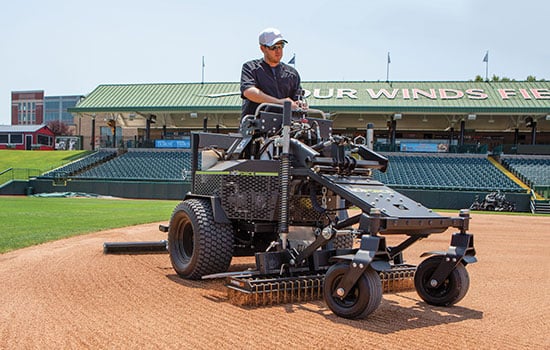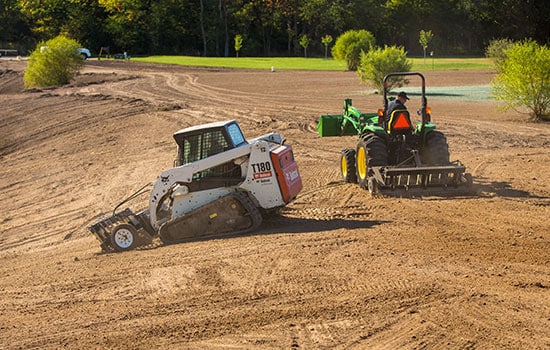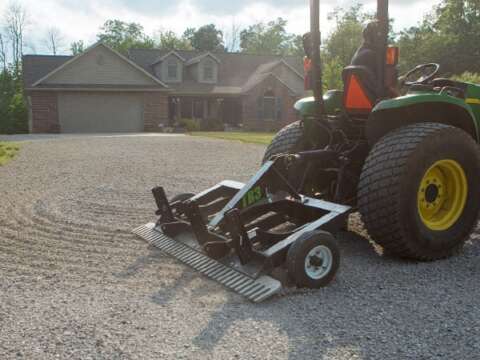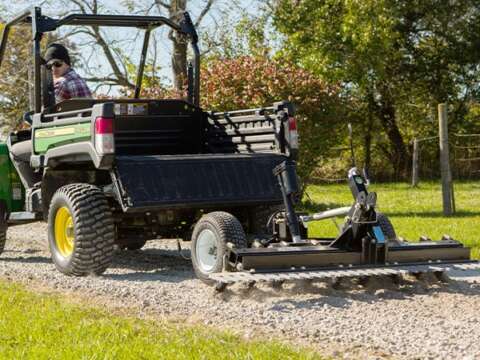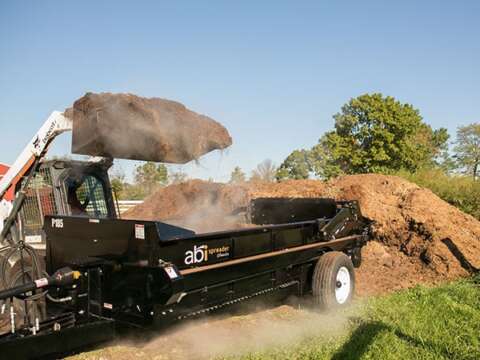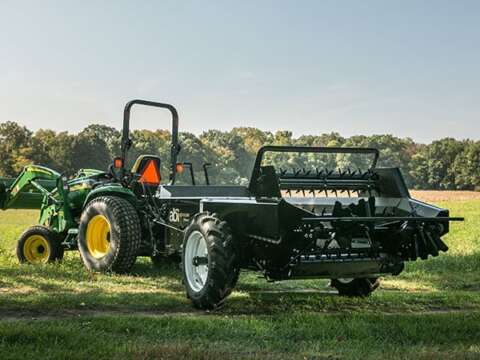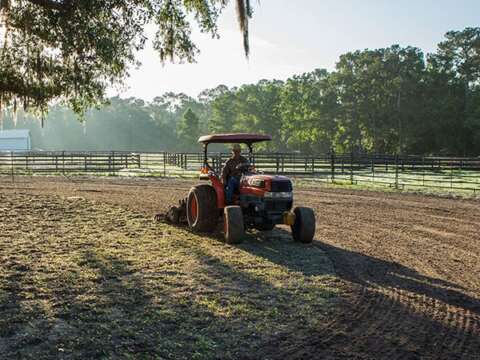
Manure Spreaders
Built Better
America’s Best Selling, Longest Lasting Manure Spreaders
Our line of classic manure spreaders includes options for ATVs, UTVs, Tractors and more.
Ground Driven
70% of our customers choose ground driven manure spreaders for their efficiency and ease of use around small to midsize farms and ranches.
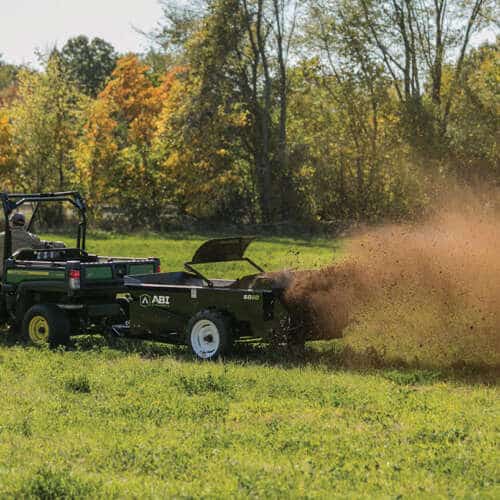
25, 50, & 65 ft³ GD – Compact Manure Spreaders
- 4-Speed - Ground Driven
- For Lawn Tractor, ATV, UTV, or Sub-Compact Tractor - Up to 11 Horses
- Starting At: $116/mo.*
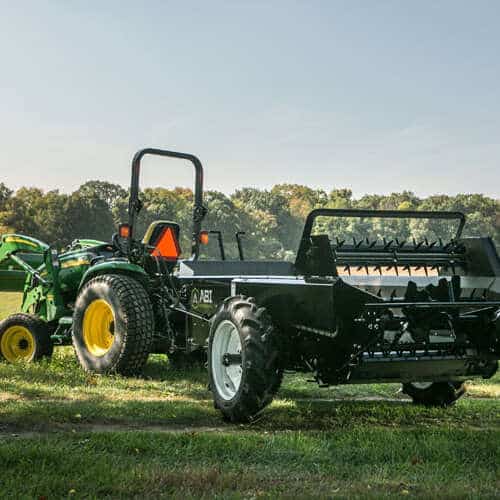
85 ft³ GD – Mid-Sized Manure Spreader
- 4-Speed - Ground Driven
- Min Tractor HP: 25+ HP - Up to 15 Horses
- Starting At: $213/mo.*
PTO Driven
When your pasture or field is large, PTO driven manure spreaders are perfect for skilled operators spreading on large pastures
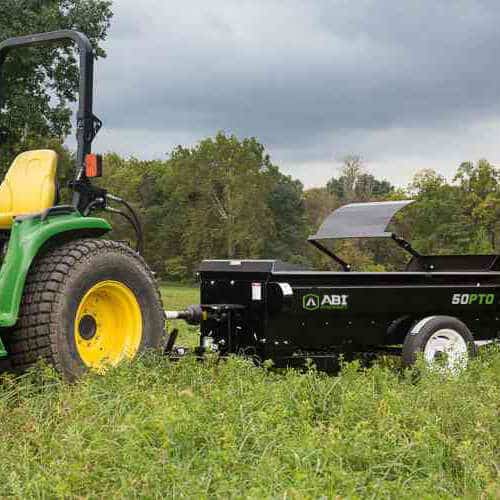
50 ft³ PTO – Compact Manure Spreader
- 4-Speed - PTO Driven
- Min Tractor HP: 22+ HP - Up to 8 Horses
- Starting At: $150mo.*
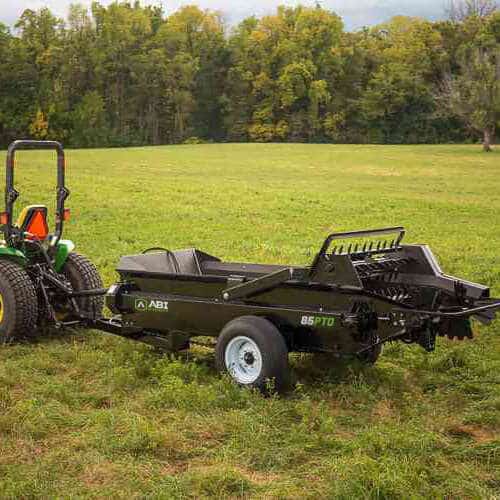
85 ft³ PTO – Mid-Sized Manure Spreader
- 4-Speed - PTO Driven
- Min Tractor HP: 25+ HP - Up to 15 Horses
- Starting At: $229/mo.*
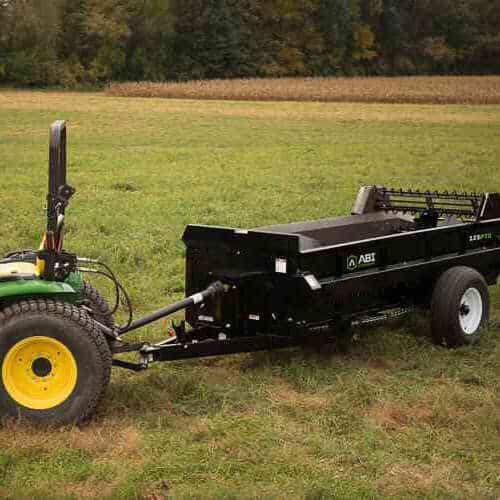
125 ft³ PTO – Large Manure Spreader
- 4-Speed - PTO Driven
- Min Tractor HP: 35+ HP - Up to 22 Horses
- Starting At: $274/mo.*
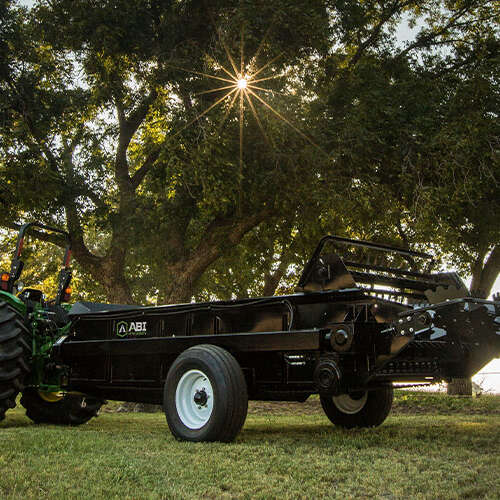
185 ft³ PTO / Hyd – Largest Manure Spreader
- Variable-Speed - PTO/Hydraulic Driven
- Min Tractor HP: 50+ HP - Up to 35 Horses
- Starting At: $365/mo.*
Compare and Contrast
Not sure what you’re looking for? Take a look at our manure spreader comparison guide, then talk to an ABI rep to find your fit.
New To Manure Spreading? We’ve Got Your Back.
Get our Animal Manure Management Guide for 5 Keys to a
Better Results, Longer Lifespan: ABI Manure Spreader Features and Benefits
2-Stage Inline Shred & Spread System
Here’s the difference.
Pulverize your manure clumps before spreading with our exclusive, 2-stage shred and spread system. This system takes the concept of the optional “top beater” you’d find with competitors and optimizes it in every way for an optimal shred.
A “top beater” only spreads the top of the manure pile. This breaks down some of the manure, but not all of it, leaving some clumps in the mix that take longer to break down in the pasteur.
An “inline shredding system” is inside the spreader box and in front of the spreading system. It shreds the middle of the manure flow and feeds manure into the primary spreading system. That means that everything that comes out of your manure spreader has to go through shredding before it hits your pasture or paddock.
4-Speed Application Flow Control
Gain ultimate control of your pasture care with industry-exclusive, 4-speed adjustable application flow. This sends manure to the rear 2-stage shred and spread system to control the flow rate of manure applied to the ground. With the 4-speed application flow control included on every classic ABI manure spreader, you can…
1. Control Manure Application
Your optimal application flow will change depending on where you’re spreading your animal manure.
When spreading on crop or hay fields, set the flow to empty as fast as possible. On pastures or paddocks, slow down the flow to apply a controlled manure application to the ground. The optional fines pan is recommended for maximum application control.
You should also use a slow flow for tough manure.
2. Enable Quick Decomposition
A light application rate of finely-shredded manure exposes more manure to sunlight, decomposing it faster. This also helps the sun’s ultraviolet light reach and kill more larva and parasites in the manure.
3. Spread All Manure Types & Consistencies
ABI manure spreaders work for all types of livestock manure, bedding materials, stages of decompositions, and weather impacts.
Stronger Materials
With the highest quality materials and advanced features essential for livestock and soil health, you’ll have a manure spreader that lasts. We’re so confident in the quality of our manure spreaders that we back them with the industry’s longest warranty.
So why does the ABI manure spreader outlast the competition?
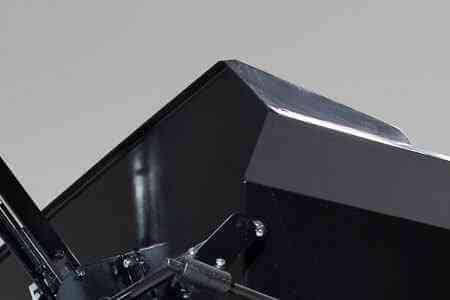
Thick Welded COR-TEN Steel
Animal manures contain corrosive chemicals like sulfates, nitrates, chlorides, hydrogen sulfide, and ammonia. All classic ABI muck and manure spreaders use hand-welded 10 or 12 gauge* COR-TEN steel that’s virtually perforation proof and has more defenses against corrosion than stainless steel.
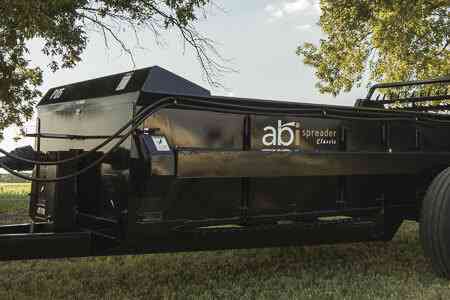
Commercial Body Coating
ABI Muck Spreaders are sand-blasted & painted with a repairable two part commercial-grade protective coating (AUE-370).
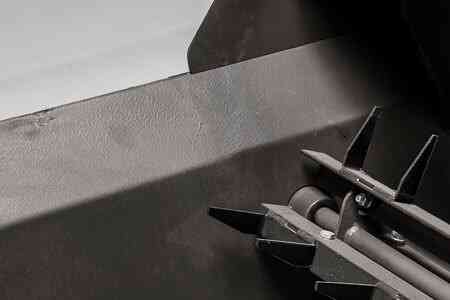
Internal Box Liner
A Coal Tar epoxy internal box liner is applied to every ABI Manure Spreader for an industrial seal, no extra charge! This easy to repair and durable liner is the same material applied to septic tanks and barges.
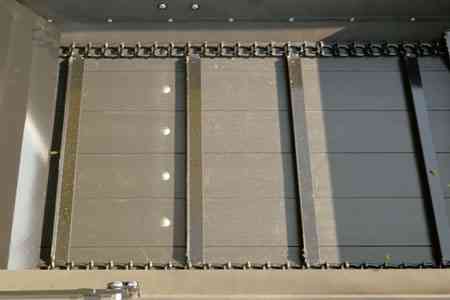
Lifetime Poly Floor
The tongue-and-groove poly-lumber flooring of ABI spreaders resists warping and will not rust, corrode, or rot for the usable life of the spreader.
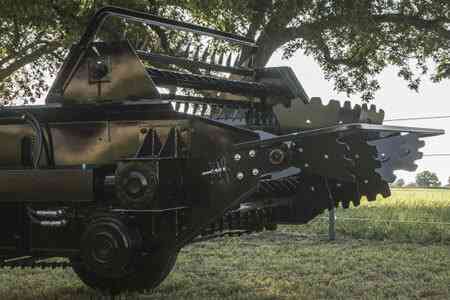
High-Quality Components
ABI spreaders weigh nearly 1/3 more than the competition. Why? Because they’re made of tough materials like; grade-5 bolts, greaseable bearings, oil-impregnated bronze bushings, heavy-duty size 60 roller chain (nearly 1″ wide), T-rod apron chain, hardened sprockets, and a thicker steel body and frame.*
*25, 50 & 65 ft³ manure spreaders for sale use 12 gauge. 85, 125, & 185 ft3 use even thicker 10 gauge steel.
Manure Spreader FAQs
Manure spreaders aren’t just for horse manure. ABI Manure Spreaders spread-it-all! ABI’s muck spreaders handle all kinds of animal manure and compost at any phase of decomposition.
Yes. Any spreader used on pastures or paddocks requires advanced features that shred manure, control manure flow, and evenly spread on the ground. ABI manure spreaders do all that and more, fitting perfectly into your rotational grazing or pasture rotation routine.rnrnOne of the best things you can do is spread a light shredded and pulverized manure application to “resting” pastures or paddocks. Do this early on long sunny and dry days to allow the manure to dry quickly. Allow the pasture area to “rest” for at least a couple of weeks before allowing livestock to graze again, reducing the possibility of parasite exposure.
The duration of time a pasture should rest after the last manure application depends on the local environment. Hot and moist areas and seasons should “extend” resting periods.rnrnA rotational grazing routine provides the best opportunity to spread on recently “rested” portions of pasture land. An eco-balanced pasture or paddock reduces parasites, increases vegetation growth, increases rotation rates, and reduces odor u0026amp; flies around the farm. ABI’s optional “Fines” or “Pasture” pan is required. For the ultimate in paddock health, spread composted manure.
We always recommend shredding manure before you spread it, avoiding spreading on or near wet areas, and giving your pasture time to rest. For more details and our our thoughts on spreading stall picked or composted manure, when to spread, and how to best spread your manure, check out our Animal Manure Management Guidebook.
Ground driven manure spreaders are easy to use, work on a variety of towing vehicles, and have enhanced safety features. They’re best for small hobby farms, show stock owners, and small ranchers.
PTO driven manure spreaders tackle large manure spreading projects. They’re harder to operate, but offer more capacity and capability for skilled operators.
The size of manure spreader that’s best for you depends on everything from your spreading frequency to how much manure your livestock produces.
Check out our guide for discovering what manure spreader size is right for you, or compare our manure spreader models.
Related Blog Posts
Related Videos


